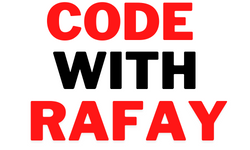What is Css?
What is CSS : CSS (Flowing Templates) permits you to make extraordinary looking pages, yet how can it work in the engine? This article makes sense of what CSS is with a basic linguistic structure model and furthermore covers a few critical terms about the language.
Prerequisites: Basic PC proficiency, fundamental programming introduced, essential information on working with records,
furthermore, HTML rudiments (concentrate on Prologue to HTML.)
What is Css?
Objective: To realize what CSS is.
In the Prologue to HTML module, we covered what HTML is and the way things are utilized to increase reports. These reports will be lucid in an internet browser. Headings will look bigger than standard text, passages break onto another line and have space between them. Joins are shaded and underlined to recognize them from the remainder of the text. How the situation is playing out are the program's default styles — exceptionally fundamental styles — that the program applies to HTML to ensure that the page will be essentially clear regardless of whether no unequivocal styling is indicated by the creator of the page.
Notwithstanding, the web would be an exhausting spot assuming all sites seemed to be that. Utilizing CSS, you have some control over precisely how HTML components search in the program, introducing your markup utilizing anything that plan you like.
For more on program/default styles, look at the accompanying video:
What is CSS for?
As we have referenced previously, CSS is a language for determining how records are introduced to clients — how they are styled, spread out, and so on.
A record is normally a text document organized utilizing a markup language — HTML is the most widely recognized markup language, yet you may likewise run over other markup dialects like SVG or XML.
Introducing a record to a client implies changing over it into a structure usable by your crowd. Programs, as Firefox, Chrome, or Edge, are intended to introduce records outwardly, for instance, on a PC screen, projector, or printer.
Note: A program is here and there called a client specialist, which essentially implies a PC program that addresses an individual inside a PC framework. Programs are the principal kind of client specialists we consider while discussing CSS, be that as it may, they are by all accounts not the only ones. There are other client specialists accessible, for example, those that convert HTML and CSS archives into PDFs to be printed.
CSS can be utilized for extremely essential archive message styling — for instance, for changing the variety and size of headings and connections. It very well may be utilized to make a design — for instance, transforming a solitary section of text into a design with a vitally satisfied region and a sidebar for related data. It could be utilized for impacts like movement. Examine the connections in this passage for explicit models.
CSS linguistic structure
CSS is a standard based language — you characterize the principles by determining gatherings of styles that ought to be applied to specific components or gatherings of components on your site page.
For instance, you can choose to have the fundamental heading on your page to be displayed as enormous red text. The accompanying code shows an exceptionally straightforward CSS decide that would accomplish the styling portrayed previously:
h1 {
variety: red;
text dimension: 5em;
}
Duplicate to Clipboard
• In the above model, the CSS rule opens with a selector. This chooses the HTML component that we will style. For this situation, we are styling level one headings ().
• We then, at that point, have a bunch of wavy supports { }.
• Inside the supports will be at least one statements, which appear as property and worth matches. We determine the property (variety in the above model) before the colon, and we indicate the worth of the property after the colon (red in this model).
• This model contains two announcements, one for variety and the other for text dimension. Each pair determines a property of the element(s) we are choosing ( for this situation), then a worth that we might want to give the property.
CSS properties have different passable qualities, contingent upon which property is being indicated. In our model, we have the variety property, which can take different variety values. We additionally have the text dimension property. This property can accept different size units as a worth.
A CSS template will contain many such guidelines, thought of consistently.
h1 {
variety: red;
text dimension: 5em;
}
p {
variety: dark;
}
Duplicate to Clipboard
You will find that you rapidly get familiar with certain qualities, though others you should turn upward. The singular property pages on MDN give you a speedy method for looking into properties and their qualities when it slips your mind or when you need to know what else you can use as a worth.
Note: You can find connects to all the CSS property pages (alongside other CSS highlights) recorded on the MDN CSS reference. On the other hand, you ought to become accustomed to looking for "mdn css-highlight name" in your #1 web search tool at whatever point you really want to figure out more data about a CSS highlight. For instance, have a go at looking for "mdn variety" and "mdn text dimension"!
CSS modules
As there are so many things that you could style utilizing CSS, the language is separated into modules. You'll see reference to these modules as you investigate MDN. A large number of the documentation pages are coordinated around a specific module. For instance, you could investigate the MDN reference to the Foundations and Boundaries module to figure out what its motivation is and the properties and elements it contains. In that module, you will likewise find a connection to Determinations that characterizes the innovation (additionally see the segment beneath).





.png)
.png)
0 Comments